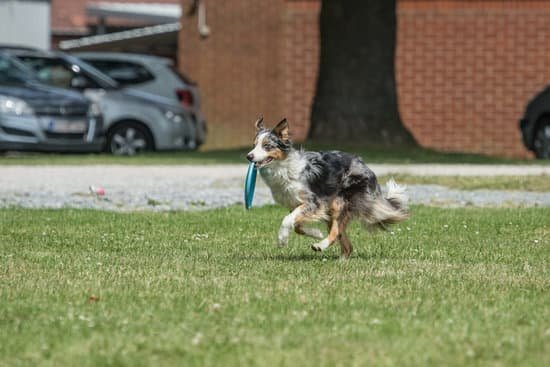Training a dog to become a service dog is a rewarding and life-changing experience for both the owner and the canine companion. Service dogs play a crucial role in assisting individuals with disabilities in their everyday lives, providing them with independence and support. In this article, we will explore the various steps and considerations involved in training a dog to become a reliable and skilled service animal.
Choosing the right dog for service dog training is the first step in the process. Not every dog is suitable for this role, so it’s important to understand what characteristics and traits make a good candidate for service work. From basic obedience training to advanced tasks, public access training, legal considerations, bonding, and continuing education, each aspect of the journey to train a service dog requires careful attention and dedication.
Before delving into the specifics of each stage of training, it’s important to recognize the important role that service dogs play in enhancing the quality of life for individuals with disabilities. Whether it’s guiding individuals with visual impairments, alerting those with hearing loss, or providing mobility assistance, service dogs are invaluable partners who make a significant difference in the lives of their owners.
Throughout this section, we will explore how to prepare your canine companion for this important and impactful role.
Choosing the Right Dog for Service Dog Training
When considering how to train a dog to become a service dog, it’s crucial to start with the right candidate. Not all dogs are suitable for this role, so choosing the right dog is the first step in the training process. The ideal service dog candidate should possess certain qualities such as intelligence, good temperament, and a willingness to please.
While any breed can potentially become a service dog, some breeds are better suited for this role than others. Golden Retrievers, Labrador Retrievers, German Shepherds, and Poodles are some of the most commonly chosen breeds for service dog training due to their intelligence and trainability.
In addition to the breed, individual personality traits also play a significant role in determining whether a dog is well-suited for service work. Service dogs need to remain calm and focused in various environments, be able to handle crowds and distractions effectively, and exhibit good social behavior.
Assessing a potential service dog’s temperament and behavior is essential before beginning formal training. If possible, working with an experienced professional who specializes in service dog training can help evaluate whether a particular dog is a good fit for this role.
Furthermore, it’s important to consider the physical attributes of the dog when selecting a candidate for service dog training. Some tasks may require strength or agility; therefore, taking into account factors such as size and physical capabilities is crucial when choosing a suitable candidate for serving as a service dog.
| Service Dog Qualities | Examples |
|---|---|
| Intelligence | Golden Retrievers, Labrador Retrievers |
| Good Temperament | German Shepherds, Poodles |
| Physical Capability | Different breeds based on task requirements |
Basic Obedience Training for Service Dogs
When training a dog to become a service dog, basic obedience training is the foundation for their success in their role. This type of training lays the groundwork for more advanced tasks and helps the dog develop good behavior in a variety of situations. Here are some key aspects of basic obedience training for service dogs:
- Teaching basic commands: The first step in basic obedience training is teaching the dog essential commands such as sit, stay, come, and heel. Consistent and positive reinforcement is key to helping the dog understand and follow these commands.
- Socialization: Service dogs need to be comfortable and well-behaved in various social settings. Socialization with other people, animals, and different environments is crucial during this stage of training.
- Leash manners: Proper leash manners are important for service dogs, as they will be required to accompany their handlers in public places. Teaching the dog to walk without pulling on the leash and to remain focused on their handler is an essential part of basic obedience training.
In addition to these aspects, it’s important for owners or trainers to have patience and consistency when conducting basic obedience training for service dogs. Positive reinforcement methods, such as using treats or praise, can help motivate the dog and create a strong bond between the handler and the canine. Ultimately, a solid foundation in basic obedience will set the stage for more specialized tasks that service dogs are trained to perform.
Service dogs undergo rigorous training that goes beyond just being house pets. They must learn advanced tasks to assist individuals with disabilities or specific needs. The next section will delve into advanced training methods for service dog tasks and how they play a crucial role in helping those in need.
Advanced Training for Service Dog Tasks
When training a dog to become a service dog, it is important to understand that they will need to perform specific tasks to assist their handler. Advanced training for service dog tasks is crucial in preparing the dog for their role in helping individuals with disabilities. This stage of training focuses on teaching the dog specialized skills that are tailored to the needs of their owner.
Task-Specific Training
During advanced training, service dogs are taught to perform a range of tasks depending on the type of assistance their handler requires. This may include retrieving items, opening doors, turning lights on and off, providing balance support, alerting to medical conditions such as seizures or diabetic episodes, and more. Each task must be carefully and methodically taught to ensure that the dog can reliably perform it when needed.
Socialization and Distraction Training
Service dogs must be able to remain focused and calm in various environments, including busy public spaces. Advanced training involves exposing the dog to different situations and distractions to ensure they remain obedient and focused even in challenging circumstances. Socialization with people and other animals is also an important aspect of this phase of training.
Handler-Focused Training
In addition to task-specific skills, advanced training for service dogs includes strengthening the bond between the dog and their handler. They must learn to anticipate their owner’s needs and respond appropriately without becoming easily distracted or stressed. This often involves incorporating real-life scenarios into the training process so that the dog can effectively assist their owner in daily activities.
Overall, advanced training for service dog tasks requires patience, consistency, and a deep understanding of both canine behavior and the specific needs of individuals with disabilities. Through diligent instruction and practice, service dogs can develop the necessary skills to become indispensable companions for those who rely on their assistance.
Public Access Training for Service Dogs
Once your dog has mastered basic obedience and advanced training for task-specific commands, the next step in their training to become a service dog is public access training. This type of training focuses on preparing your service dog to behave appropriately and confidently in public spaces. Public access training teaches your dog how to properly navigate through crowded areas, remain calm around distractions, and follow commands in various environments.
During public access training, it’s essential to expose your service dog to different settings such as shopping centers, restaurants, airports, and other public locations. It’s important that your dog remains focused on their tasks and is not easily distracted by the hustle and bustle of these environments. Additionally, they must learn to remain calm and well-behaved even when faced with unfamiliar sights, sounds, and smells.
One key aspect of public access training is ensuring that your service dog understands how to interact with people politely but also knows when it’s time to focus on their work. This can be achieved through controlled socialization exercises where the dog learns how to remain attentive to their handler while still being friendly towards others.
It’s important for both the handler and the service dog to project confidence during these exercises in order to build a solid foundation for successful public access training.
| Aspect | Description |
|---|---|
| Settings | Expose the service dog in different locations such as shopping centers, restaurants, airports |
| Socialization | Teach the dogs how to interact politely with people but still stay focused on their work |
| Confidence Building | Both the handler and the service dog need to project confidence during exercises |
Legal Considerations for Service Dog Owners
Service dogs are not just pets, they are working animals that provide assistance to individuals with disabilities. As such, there are legal considerations that service dog owners must be aware of in order to ensure the rights and protections of both the handler and the service dog.
Understanding the Laws
It is important for service dog owners to have a thorough understanding of the laws that govern their rights and responsibilities. The Americans with Disabilities Act (ADA) is the primary law that protects the rights of individuals with disabilities who use service animals. This law allows a person with a disability to be accompanied by a service animal in all areas where the public is allowed, including businesses, non-profit organizations, and government facilities.
Public Access Rights
Under the ADA, service dogs have public access rights and are allowed to accompany their handlers in places where pets are typically not permitted. It is important for service dog owners to be mindful of these regulations and educate others about their rights. Additionally, it is important for owners to ensure that their service dog displays proper behavior when out in public spaces.
Documentation and Identification
While it is not required by law for service dogs to wear special vests or carry documentation, many owners choose to do so in order to avoid any potential conflicts or misunderstandings. In some cases, establishments may request verification that a dog is a service animal. Service dog owners should familiarize themselves with what kind of documentation may be legally requested and under what circumstances.
In summary, being aware of legal considerations as a service dog owner can help ensure smooth interactions in public spaces and protection under the law for both the handler and the service animal. It’s crucial for owners not only understand their own rights but also educate others on how to properly interact with a working service dog.
Bonding and Relationship Building With Your Service Dog
Building a strong bond and relationship with your service dog is crucial in ensuring a successful partnership. A well-developed bond will enhance communication, trust, and overall teamwork between you and your dog. To achieve this, it is important to spend quality time with your service dog, engaging in activities that promote bonding and mutual understanding.
One way to strengthen the bond with your service dog is through positive reinforcement training. This involves rewarding good behavior with treats, praise, or playtime. By consistently using positive reinforcement, you can create a positive association between you and your dog, establishing a strong connection based on trust and respect.
In addition to training exercises, regular grooming sessions and physical touch are also essential in building a close relationship with your service dog. It is important to regularly groom, pet, and cuddle your dog to create a sense of security and comfort. This physical interaction not only strengthens the bond but also helps in identifying any physical changes or health concerns early on.
By investing time and effort into bonding and relationship building with your service dog, you can establish a solid foundation for effective communication and collaboration. Maintaining a strong bond will not only enhance the effectiveness of your service dog but also contribute to the overall well-being of both you and your canine companion.
Continuing Education and Support for Service Dog Training
Once your dog has completed its basic obedience and advanced training, it’s important to continue its education and provide ongoing support to ensure that it maintains its skills as a service dog. Here are some ways to keep your dog at the top of its game:
1. Continued Training: Just like people, dogs need regular practice to maintain their skills. Set aside time each day for short training sessions to reinforce commands and tasks. This can also help prevent regression in behavior and obedience.
2. Joining Support Groups: There are many organizations and online communities dedicated to service dogs and their owners. Joining one of these groups can provide you with access to valuable resources, support, and advice from people who are going through similar experiences with training their service dogs.
3. Working with a Professional Trainer: Consider working with a professional trainer who specializes in service dog training. They can provide guidance, offer additional training techniques, and help address any specific challenges or issues that may arise during the training process.
4. Continuing Socialization: Even after completing public access training, it’s important to continue socializing your service dog in various environments. Regular exposure to different situations will help your dog remain confident and well-adjusted when interacting with people and other animals in public.
By continually investing time and effort into your service dog’s training, you can help ensure that it remains well-prepared to assist you in managing your disability or medical condition effectively.
Maintaining the Health and Well-Being of Your Service Dog
In conclusion, training a dog to become a service dog is a significant commitment that requires time, patience, and ongoing dedication. It is essential to understand the role of a service dog and the specific tasks they are trained to perform to assist individuals with disabilities. Selecting the right dog for service dog training is crucial, as their temperament and abilities will greatly impact their success in becoming a reliable service dog.
Basic obedience training lays the foundation for advanced training, which includes teaching the dog specific tasks tailored to the individual’s needs. Public access training ensures that the service dog can navigate various environments while maintaining proper behavior and focus on their handler. It’s important to consider legal considerations for service dog owners, including understanding rights and responsibilities under the law.
Furthermore, bonding and relationship building with your service dog are key components of successful training. Providing ongoing education, support, and enrichment activities will help maintain the health and well-being of your service dog.
Regular veterinary care, appropriate nutrition, exercise, and mental stimulation are essential for keeping your service dog happy and healthy as they fulfill their vital role in supporting individuals with disabilities. Overall, proper training coupled with attentive care will ensure that your service dog can effectively improve the quality of life for those they assist.
Frequently Asked Questions
How Do I Train My Dog to Be a Service Dog at Home?
Training a dog to be a service dog at home requires consistency, patience, and clear communication. Start by teaching basic obedience commands and socializing your dog in various environments. Then, progress to specific tasks related to your needs.
Can Someone Ask Me for Papers on My Service Dog?
Yes, under the Americans with Disabilities Act (ADA), businesses and other public places are allowed to ask two questions: whether the dog is required because of a disability and what tasks the dog has been trained to perform. However, they cannot request any documentation for the service dog.
Is USA Service Dog Registration Legit?
USA Service Dog Registration is not considered legit by major organizations such as the ADA and the International Association of Assistance Dog Partners. Legitimate service dog registries do not exist since registration is not required by law in the USA for service animals.

Welcome to the blog! I am a professional dog trainer and have been working with dogs for many years. In this blog, I will be discussing various topics related to dog training, including tips, tricks, and advice. I hope you find this information helpful and informative. Thanks for reading!





